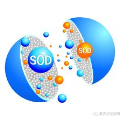Unsupervised Salient Object Detection (USOD) is of paramount significance for both industrial applications and downstream tasks. Existing deep-learning (DL) based USOD methods utilize some low-quality saliency predictions extracted by several traditional SOD methods as saliency cues, which mainly capture some conspicuous regions in images. Furthermore, they refine these saliency cues with the assistant of semantic information, which is obtained from some models trained by supervised learning in other related vision tasks. In this work, we propose a two-stage Activation-to-Saliency (A2S) framework that effectively generates high-quality saliency cues and uses these cues to train a robust saliency detector. More importantly, no human annotations are involved in our framework during the whole training process. In the first stage, we transform a pretrained network (MoCo v2) to aggregate multi-level features to a single activation map, where an Adaptive Decision Boundary (ADB) is proposed to assist the training of the transformed network. To facilitate the generation of high-quality pseudo labels, we propose a loss function to enlarges the feature distances between pixels and their means. In the second stage, an Online Label Rectifying (OLR) strategy updates the pseudo labels during the training process to reduce the negative impact of distractors. In addition, we construct a lightweight saliency detector using two Residual Attention Modules (RAMs), which refine the high-level features using the complementary information in low-level features, such as edges and colors. Extensive experiments on several SOD benchmarks prove that our framework reports significant performance compared with existing USOD methods. Moreover, training our framework on 3000 images consumes about 1 hour, which is over 30x faster than previous state-of-the-art methods.
翻译:以 USOD (DL) 为基础的 USOD (DL) 现有 深层学习(DL) 方法将一些以传统 SOD 方法提取的低质量显著性预测作为显著提示,主要在图像中捕捉一些显著的区域。此外,它们还改进了与语义信息助理的这些显著提示,这些信息来自在其他相关愿景任务中受过监督学习培训的一些模型。在这项工作中,我们提议了一个双阶段“动态对智能(A2S)”框架,以有效生成高品质显著提示,并利用这些提示来培训强度突出性探测器。更重要的是,在整个培训过程中,我们的框架中没有包含任何人文说明。在第一阶段,我们将一个经过预先训练的网络(MOCo v2) 转变为一个综合的多层次特征,在单一的启动图中,建议一个适应性决定边界(ADB) 来协助对转型的网络进行培训。为了便利生成高质量假标签(A2),我们建议一个损失功能功能,以扩大高质量水平的深度培训距离, 将PILOLO(RISOL ) 和其高级升级 战略中, 快速升级为标准。




